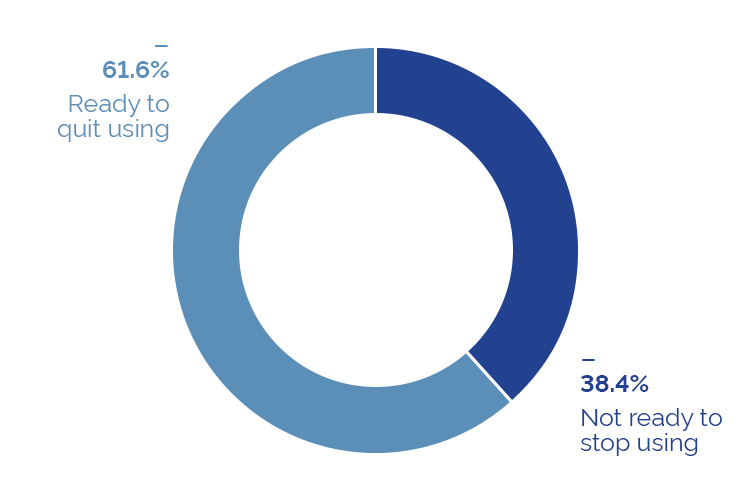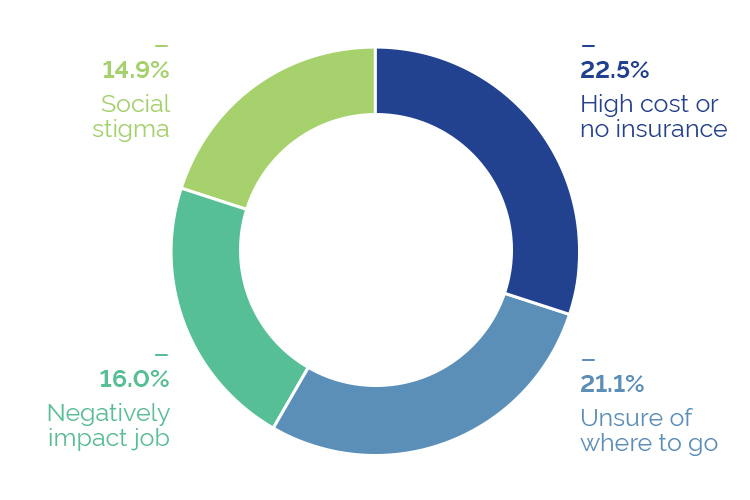A large majority of people who want to receive care don’t get it due to intangible concepts such as shame and invisibility. Architecture can help solve this problem. The first step: getting past the stigma.
Note: This article is the first of a series of three focused on substance-use disorder care. Our writer, DesignGroup Project Architect Kristina Bertocchi, explores this much-needed area of healthcare and support. We’re proud of the effort she’s put into these pieces, and of her work in aiding those who aid others in crisis.
By Kristina Bertocchi, AIA, NCARB, Project Architect, DesignGroup
Take a moment to imagine the community you live in. What images come to mind when you think of your home or your neighbor's next door? Is there a specific image of a grocery store that comes to mind? A favorite restaurant? Now visualize where you would go if you broke your arm. Maybe an Urgent Care or an emergency room, right?
In the same vein, picture where you would go if you needed support for a substance-use disorder. What comes to your mind when you think of an addiction center in your community?
For most people, very little comes to mind when prompted to imagine the addiction centers in their community. By blending or hiding in the social fabric, the design of these buildings reinforces the unfounded idea that there is shame in receiving care for this disorder. Because of this, I believe we should strengthen the image of substance-use disorders in our communities.
As of 2018, 18.9 million Americans needed substance-use treatment but did not receive specialty care. Of those who perceived a need for treatment, nearly two-thirds said they were ready to receive care. [ 1 ]

So, what is holding them back? Of that group, about a quarter of them did not receive care because of social stigma, another quarter because they feared it would negatively impact their job, and a third because they were unsure of where to go.

That means that a large majority of individuals who need and want care don’t receive it due to intangible concepts such as social stigma and visibility. Architects are always looking for the causes of intended and unintended effects of their designs on the world. There is real potential here for our discipline to begin to remove some of the foundations of shame, stigma, and (in)visibility through the image of the building itself.
Needs and Motivations
Let’s look at a few of the many reasons for society to remedy these issues of shame and stigma. First, there’s the basic, historic falsehood that these individuals come from a specific socio-economic bracket or have specific character flaws. Yet I’ve learned that substance-use disorder is not a lack of some moral compass or personal strength but a medical illness. When I spoke with Amanda Lucas, Executive Director of Clinical Operations, Neurological Institute and Executive Director, Ohio State Harding Hospital, she explained that substance-use disorder is classified as a component of behavioral health and is logged in the same data and statistics manual used to diagnose all mental health diagnoses. She also said that a person diagnosed with a mental health illness has a 70% chance of having or developing a symptom of addiction.
This supports the idea that addiction is not a failure of character but a disorder that has a connection to genetics, environment, historical trauma, and chronic stress. It’s said that this disorder doesn’t discriminate – those who suffer from it could just as easily look like you (or your boss) as whatever other image comes to your mind.
Unfortunately, for individuals who don’t receive targeted care in an outpatient setting, the front door for receiving care is often the emergency department. While an essential and valuable community resource, EDs are not the ideal scenario for many reasons, such as the pressure on emergency staff along with financial implications for both the patient and the healthcare system. (If someone reading this piece is wondering where they can go to start the process of receiving care, Lucas said that many find entry to care through their Primary Care Provider or even their OB-GYN, if applicable. This, along with local community health centers, could be a good place to start.)
The final reason for challenging the stigma of substance-use disorder is social justice. At the start of this article, if an image of a substance-use recovery center did come to your mind, surveys suggest it was most likely that of a luxurious celebrity rehab or something from a magazine. It’s important to reiterate that while the disorder doesn’t discriminate, the level of care does. Compared to the visible and accessible options of care for only those who can pay the big bucks, the stigma in lower socio-economic areas persists.
I’ve given you lots of reasons to change these perceptions. In Parts 2 and 3 of this series, we’ll dive deeper into substance-use disorder care centers and see what strategies we can begin to implement to destigmatize care.

Kristina Bertocchi, AIA, NCARB
Project Architect
As a project architect, Kristina finds purpose in helping the client’s vision become a reality, from early conception to construction. She is dedicated to the healthcare discipline and enjoys working in a field that gives back to the communities she works in. Kristina believes communication is at the core of architecture and that successful communication results in successful projects. She balances her professional work with academic engagement at The Ohio State University, teaching freshman studio to help support the students during their challenging first year.
1 | Substance Abuse and Mental Health Services Administration. (2019). Key substance use and mental health indicators in the United States: Results from the 2018 National Survey on Drug Use and Health. Rockville, MD: Center for Behavioral Health Statistics and Quality, Substance Abuse and Mental Health Services Administration. ↩
